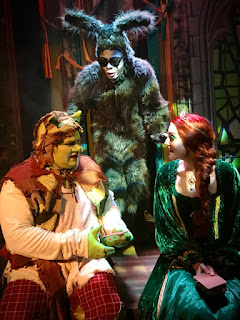 |
| Heather Cooper |
 |
| Matthew Jenkins Jaroszewicz |
An
Electrifying Union of Organ and Orchestra
By
Tom Wachunas
“Organ playing is the manifestation of a
will filled with the vision of eternity.”
- Charles-Marie Widor
Among many fascinating aspects of the January
25 performance by the Canton Symphony Orchestra (CSO) was the ensemble’s
untiring attentiveness to the conductor. Here was a remarkable connectivity, a
sharpened focus, a palpable state of eager readiness. The musicians were always
alert, ever poised to instantaneously respond, with riveting precision, to
signals from the podium.
Those signals were
transmitted in delightfully animated fashion by the CSO Assistant Conductor,
Matthew Jenkins Jaroszewicz. Throughout the entire concert, beginning with an
exuberant performance of Berlioz’s Roman
Carnival Overture, his lively baton technique was itself a kind of dancing
at the podium. During the Berlioz work, he often leaned into the orchestra in
flurries of pronounced gestures and prompts, as if to further embolden the
whirling woodwinds, the sprightly percussion, and the blazing brass.
The remainder
of the evening featured the captivating organ soloist, Heather Cooper, in three
late-19th century French works. The first of those was Alexandre
Guilmant’s Symphony No. 1 for Organ and Orchestra. The work is a marvelous
employment of the organ’s full range of aural colors and voicings, seamlessly
integrated with the powerful sonority of strings and brass. Call it an
orchestra within an orchestra. Cooper’s nuanced shaping of passages ranging
from sumptuous majesty to quiet, idyllic lyricism was utterly stunning.
Her rendering
of the grand Toccata for Organ and
Orchestra, the final movement of Charles-Marie Widor’s Symphony No. 5, was
equally breathtaking. With bright, rhythmic punctuations from the brass and
timpani, Cooper’s execution of the work’s thrilling cascades of constant
staccato arpeggios, balanced with rich, syncopated chords, left the audience
clamoring for more. She generously obliged with a barn-burner of an encore -
J.S. Bach’s Gigue Fugue. The
mesmerizing spectacle of her fingers moving along the keyboard, her feet gliding
along the pedals, conjured a giddy vision in my mind: Imagine someone typing
100 words per minute while simultaneously doing a fast and intricate tap dance.
Following the
intermission, Cooper joined the full orchestra for a magnificent performance of
Camille Saint-Saëns’ Symphony No. 3 in C Minor (the “Organ Symphony”). While
her artistry was certainly brilliant throughout, in this complex work, the
organ isn’t a stand-alone virtuosic element so much as it’s on equal footing
with the orchestra. Both articulate a scintillating array of colors, textures,
and moods. From serene and ethereal moments, to substantial summonings of
remarkable orchestral power, Cooper and her ensemble partners formed an
altogether electrifying union.
The
exhilarating symphony ended on a note of such splendorous grandeur that when
conductor Matthew Jenkins Jaroszewicz finished his podium dance and turned to face
the packed house, he seemed literally aglow. His triumphal, wide-eyed smile was
contagious, prompting well-deserved joyous shouts of approval from all present.


















